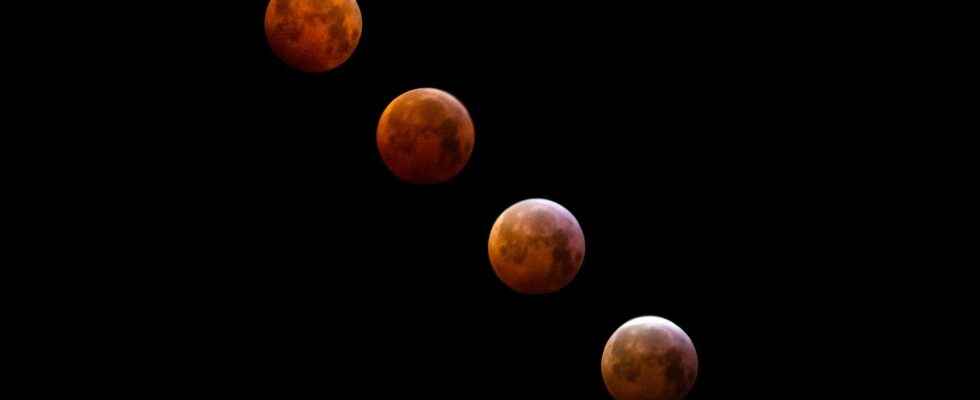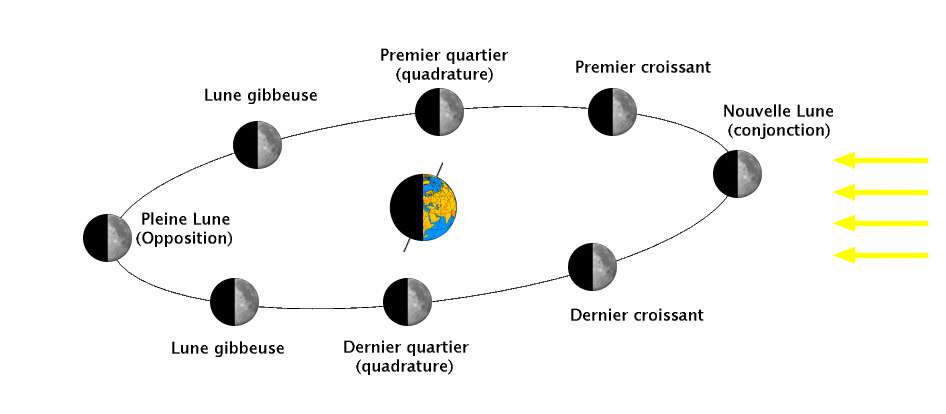It’s a rare event that will happen in heaven nocturnal this month of May 2022: on the night of May 15 to 16, the Moon will pass through shadow in the earthwhich will lead to a total lunar eclipse ! Visible at the end of the night, it will be observable at different times depending on where you are.
A perfect alignment between the Moon, the Earth and the Sun
It corresponds to a perfect alignment between the Moon, the Earth, and the Sun. This therefore implies that it can only occur in the event of full moon, when the Earth is between the Sun and the Moon. However, in most cases no eclipse of course, because theorbit of the satellite is offset by approximately 5° with respect to that of the Earth. It thus passes north or south of the Earth’s orbit.
Normally, as the Moon’s orbit is not quite aligned with that of the Earth, the full Moon is clearly visible. © Looxix, Wikimedia Commons, CC by-sa 3.0
In the case of a lunar eclipse, it passes through the shadow or penumbra of the Earth: its orbit is aligned with the plane of that of the Earth. Such events occur twice a year, but a total eclipse is much rarer, as it is often penumbral or partial. On May 16, 2022, the alignment will be almost perfect between the three starsso that the Moon will adorn itself with beautiful copper shades ! The latest visible from mainland France occurred in 2019, on January 21 to be exact.
Where and when to observe it?
For amateurs, the best observation points are located in the West Indies, Guyana and Quebec, where the eclipse will appear in its entirety. The show will begin when the Moon is high in the sky around 9:30 p.m. in Quebec and the West Indies, 10:30 p.m. in Guyana, and will end once it has set, around 3 or 4 a.m. The entry into the shadow zone will occur one hour after the start of the eclipse, and will last approximately one hour.
In mainland France, it will be visible early in the morning on May 16, with entry into darkness around 3:30 a.m., into shadow around 4:30 a.m. and in full at 5:30 a.m. will set while the eclipse will still be total, but that will not prevent us from observing superb colors on the surface of our satellite! Unfortunately, the continents of Oceania and Asia will benefit little or nothing from the show this time around.
Interested in what you just read?

